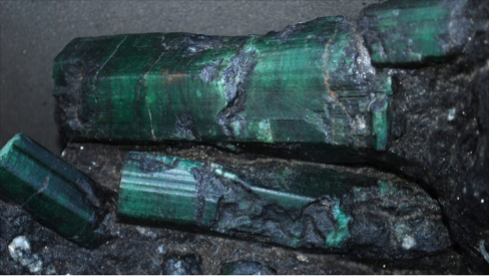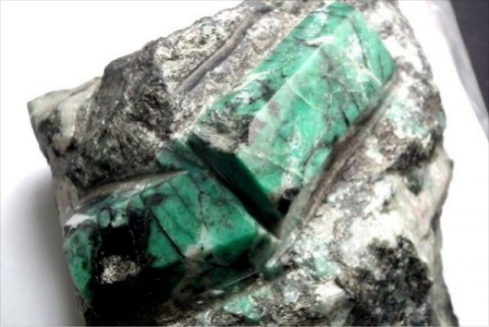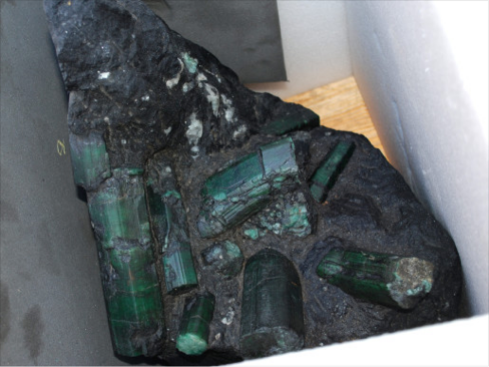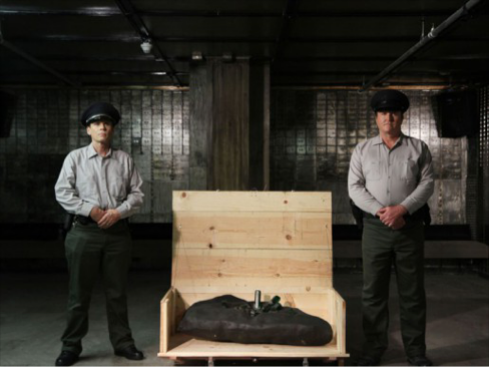
In 2001, in the Brazilian city of Pindobaçu, in the northern state of Bahia, a precious metal prospector found an astonishing object in a mine: An incredibly large emeraldencrusted rock, bigger than anyone present had ever seen until then. It was dark in hue, shaped like a tombstone and with a dozen greenish columns of emeralds sticking out.
This is about the Bahia emerald. It is not just any: It is considered the largest known emerald and one of the largest gems ever discovered. For its value, its owners probably would not want to take it out to the street unless surrounded by bodyguards. But this is not the only thing that stands out: Behind this, is a fascinating story, with a trip through several countries, a sinking under water in a city ravaged by a hurricane and ten people, three companies and the Brazilian government claiming your belonging.
Gems fascinate many. Rubies, sapphires, diamonds … All of them stand out for their brilliance and their shapes, even without being polished. In a ring or pendant, well displayed, they can leave anyone with their mouths open. But first you have to be able to buy them, of course. After all, it’s all about money.
The rock in which the Bahia emerald was inserted weighed on its own: In principle, 381 kilos, although later it was ensured that it was a little less. The mass of the emerald would be equivalent to 180,000 carats or about 36 kilos. In other words, Bahia was the largest unpolished emerald in the world. Its value has been estimated at 372 million dollars (336 million euros).

According to the Brazilian news, a resident of Bahia bought the emerald for 5,000 dollars (about 4,500 euros at current exchange rates) and then sold it for 20,000 dollars (about 18,000 euros). After that, the history of the Bahia emerald has not been without its suitors and potential buyers. At that time, its journey through the American continent had only just begun.
One of those interested buyers was a certain Tony Thomas , a 37-year-old American with money and the desire to invest it. He knew a consultant related to mining, Ken Conetto , who told him about Brazilian emeralds. Thomas traveled to the South American country to buy these gems cheaply. In Sao Paulo, they showed him the Bahia emerald. Amazed, he took many photos of it and asked his companions to take a picture of him with it.

Over time, he says he paid $ 60,000 (54,000 euros at current exchange rates) for the Brazilians to send it to California, but they never did. He also had no invoice to prove that acquisition. But that didn’t stop him from staying close to it.
In 2004, the emerald’s owners created a mining company in Panama and shipped the Gem to San José, California. The gem first traveled to New Orleans (it was during Hurricane Katrina, in 2005, that it sunk for several weeks under water, while waiting in a warehouse) and continued its journey through the United States, where several investors wanted to buy it, although it never materialized the definitive operation. That made many others feel ripped off.

The Bahia emerald was supposedly for sale on eBay, back in 2007 . According to the bizarre story that someone invented for this platform, the stone was extracted in the Brazilian state of the same name and dragged by a team of men through the jungle, bound for Sao Paulo. However, when they had been traveling for five months, panthers attacked the mules of the entourage by surprise, and the company had to continue on the road with a kind of stretcher made of wood and transported by hand. The extravagant story did not sell it, although it did increase its value.
The adventures in the United States continued until October 2008, when Ken Conetto and company denounced the theft of the emerald in Los Angeles. Detectives tracked him down in Idaho. Apparently, the rock was at the home of Kit Morrison, a businessman, who had stolen it from the Los Angeles warehouse in which it was, thanks to one of Conetto’s business colleagues, Jerry Ferrara. When the alleged thief’s wife opened the door for detectives, she saw a whole line of police cars before her. Her husband was in Los Angeles, and detectives spoke to him from the house. He denied that Bahia was in Idaho. “If you don’t take us to the emerald, we’ll have to put you in jail,” one of them told him. “Take me to jail,” he replied.

A trial with many owners
Finally, Morrison calm down and decided to cooperate with the police. Bahia was in Las Vegas, hidden in another warehouse. In January 2009, when Conetto and Morrison were in the middle of a lawsuit over ownership of the rock, four other people claimed that Bahia belonged to them, claiming they had been scammed. And as if this were not enough, its original owner also claimed ownership of the boulder.
In 2014, Brazil demanded the repatriation of Bahia. According to the authorities, the stone was illegally mined and exported. “The Bahia emerald is, and always has been, the property of Brazil.” Finally, in 2015, Justice agreed with Morrison and Ferrera’s company and argued that she was the true owner of the stone after having paid 1.3 million dollars as collateral in a sale that did not close. In addition, the judge established the true weight of the emerald, reducing it to 340 kilos. Even so, it continues to fascinate by its size.
Over time, Conetto, the one who took it to the United States, has assured a journalist that he has a stone (we don’t know what kind) “four times bigger than the Bahia emerald.” Could a different gem cause as many headaches as for a detective movie?
